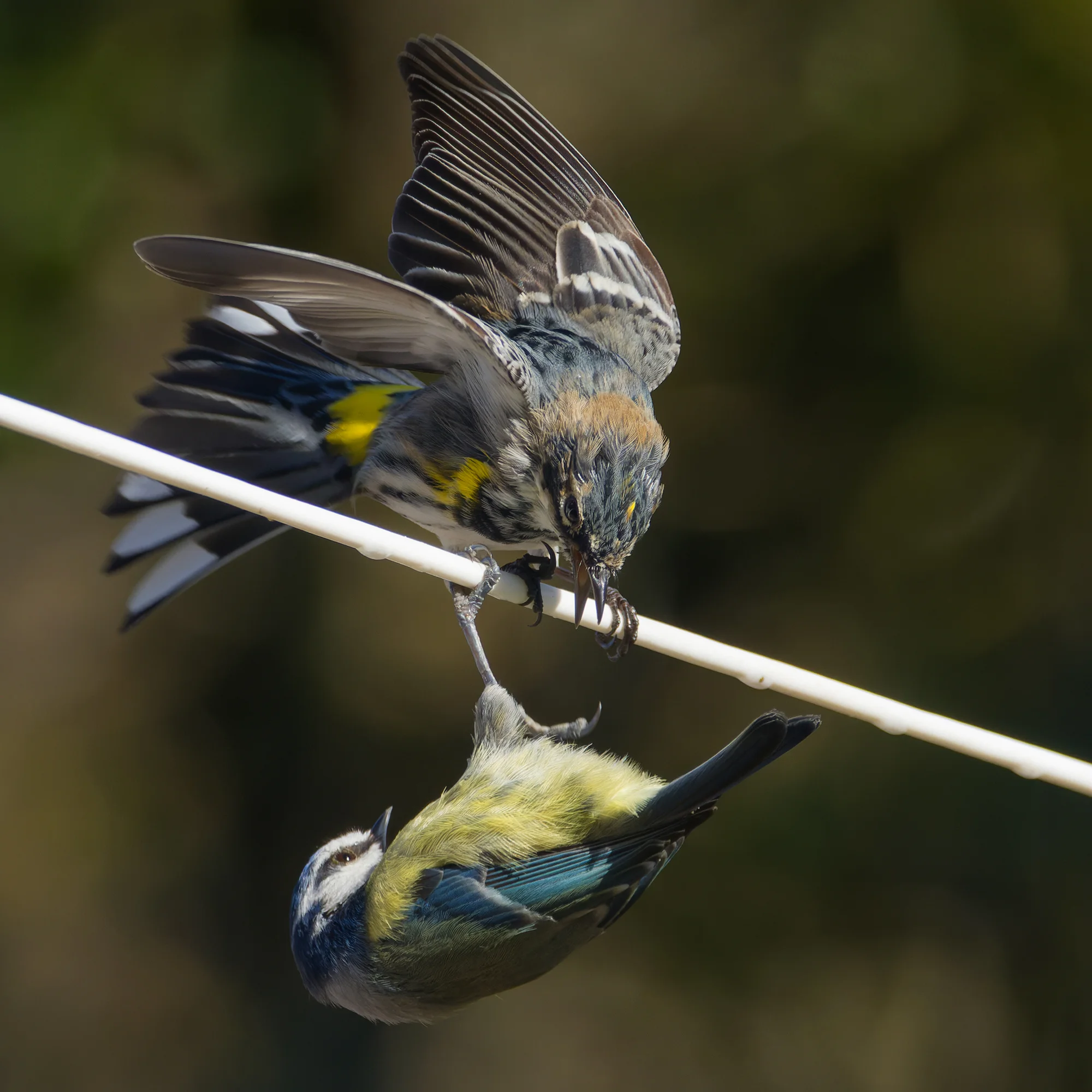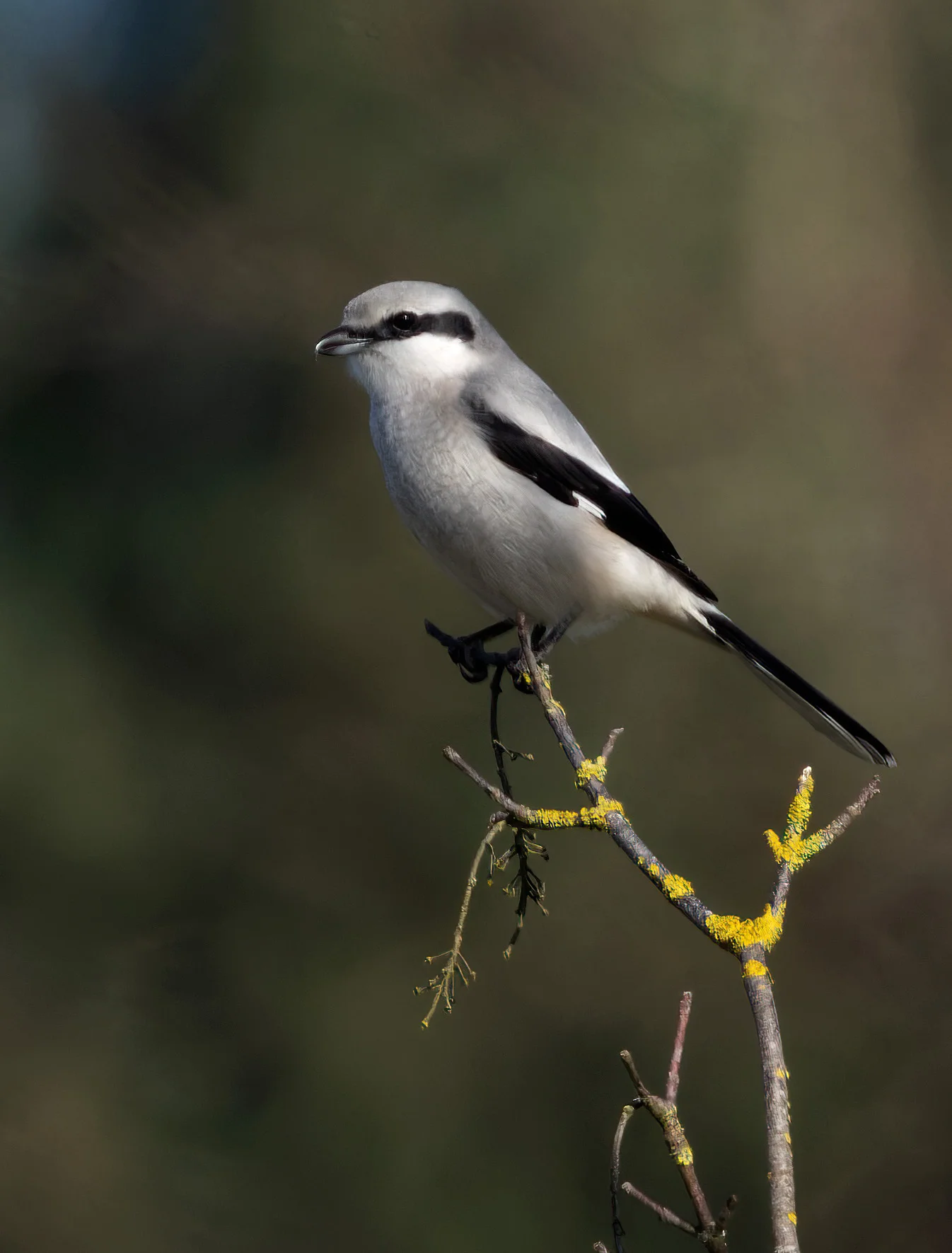Blustery, showery weather and temperatures in the low teens meant it was an Easter Weekend to wrap up warm – and several returning summer visitors must have wondered just quite why they had rushed back so keenly. First migrants of the spring recorded this week included Grasshopper and Reed Warblers, Common Nightingale, Common Cuckoo and Common Tern.
A healthy early period of spring Little Gull passage, driven chiefly by easterly winds on Sunday, saw the species well-represented across Central England up to the Pennines, with several birds now starting to sport their pink-breasted and black-headed summer garms. Although most flocked numbered in the single digits it was still a welcome early flurry.

Little Gull, Pugney's CP, West Yorkshire (Tim Melling).
In Dorset, a pleasing discovery saw the return of the second-winter Forster's Tern to Poole Harbour from 30th (after a possible sighting on 26th), having spent the winter on the north coast of Brittany, France. Last year it was present in the county's tern colonies for nearly seven months between 23 April and 11 November.

Forster's Tern, Arne RSPB, Dorset (Mark Leitch).
Suspicions about two intriguing first-winter drake scoter keeping close company with the drake White-winged Scoter at Inch, Co Kerry, since early December were confirmed on 31st, with both revealing themselves to be White-winged. This continues their stratospheric rise in an Irish context. Before the winter of 2023/24, there had only been one previous Irish record – off Achill Island, Co Mayo, last winter. The trio, therefore, become the second, third and fourth individuals recorded in Ireland, with the fifth following in quick succession at Inishmore, Co Galway, in January. The mini-flock remained accompanied by two Surf Scoter, with four more off the coast of Britain.
No, I’m not in the USA! 3x White-winged Scoter (adult and 2x 1st. Wn. males ) and a pair of Surf Scoter off Inch Beach, Co. Kerry just now. 😎 @KerryBirdNews @BirdGuides pic.twitter.com/G5G3XmEquP
— Aidan G. Kelly (@agk10k) March 31, 2024
White-winged Scoter and Surf Scoter, Inch, Kerry (Aidan Kelly).
Prompting an unexpected twitch to permit-only Woolston Eyes NR, Cheshire, was the presence of a drake Ruddy Duck from 26th. This is likely one of the last surviving individuals left in Britain, with the previous publicised sighting involving one in Rutland in January 2023. Amazingly, this was joined on site by a pair of Ferruginous Duck on 30-31st, with the lingering Lesser Scaup also still present. Lesser Scaup in five other counties included a new drake in Glamorgan.
![]()
Ruddy Duck, Woolston Eyes NR (permit only), Cheshire (Dan Owen).
Lingering at Sand Loch, Aberdeenshire, until 26th, the adult drake Bufflehead paused its north-east trajectory and U-turned south-west, relocating to Loch Leven, Perth and Kinross, from 29th – where it became another county first. Laois was treated to a welcome county first with a drake American Wigeon at Shanahoe Marsh. It was one of two in Ireland, with a further three in Britain. Other totals comprised 21 Green-winged Teal, 30 Ring-necked Ducks and 17 Smew. Garganey were at more than 50 sites as far north as Lancashire, but numbers remain low compared to this time in 2023 and 2022.

Bufflehead, Sands of Forvie NNR, Aberdeenshire (Ron Macdonald).

Ring-necked Duck, Glasgow, Clyde (Anne Carrington-Cotton).
A diver off the Aberdeenshire coast at Whitehills looked a strong match for the county's first Pacific, though unfortunately it wouldn't be seen again. The adult at Crookhaven, Co Cork, began to moult into its summer regalia, while the Pied-billed Grebe was reported for the first time since mid-February on Inishmore, Co Galway. White-billed Divers included at least eight at Sandend, Aberdeenshire, and one off the Ayrshire coast.

Pacific Diver, Crookhaven, Cork (Richard Mills).
An adult Red-breasted Goose was again at Blakeney Harbour, Norfolk, on 30th and the East Yorkshire Black Brant lasted into April. Caithness hosted a Snow Goose at Halkirk.
In Ayrshire, the first winter Myrtle Warbler remained a reliable visitor to a Kilwinning garden throughout the week, with its 42-day stint to date making it the longest-staying Myrtle on record, beating the previous record of 38 set by the first-ever British record – at Newton St Cyres, Devon, in 1955. An ongoing charitable collection has raised more than £2,400 for North Ayrshire Cancer Care to date.

Myrtle Warbler (top) and Blue Tit, Kilwinning, Ayrshire (Stevie Clarke).

Chart of long-staying Myrtle Warblers (OrniStats).
A Red-flanked Bluetail on Fair Isle, Shetland, from 29th is just the second spring record for the island. Three Hoopoes were in the South-West, while one at Jubilee River NR, Berkshire, on 1st had some locals wondering whether it was an ill-advised April Fool. It wasn't, though unfortunately it would never be seen again. If confirmed, a Cetti's Warbler at Newton Mearns on 29th would be a first for Clyde.

Red-flanked Bluetail, Fair Isle, Shetland (Alex Penn).
Hoopoe, Portland, Dorset (Martin Adlam).
The first Red-rumped Swallow of 2024 scythed over Christchurch Harbour, Dorset, on the morning of 29th. An Alpine Swift arrived fresh from a Biscay crossing over Shoalstone Point, Devon, on 28th, followed by one at Foreness Point, Kent, on 31st.

Red-rumped Swallow, Christchurch Harbour, Dorset (Scott Usher).
A brief Richard's Pipit near Okehampton Devon, on 26th wouldn't be relocated, with one still in Cumbria. The Little Bunting persisted at a Devon feeding station and both the Rustic Bunting and Coues's Arctic Redpoll remained at West Raynham, Norfolk. A new Great Grey Shrike in Mainland Shetland was joined by lingering birds in Norfolk and Dorset, with Shore Larks still at five sites.

Great Grey Shrike, Weeting, Norfolk (Chris Darby).

Shore Lark, Newbiggin-by-the-Sea, Northumberland (Paul Davison).
It's close to impossible to separate 'wild' White Storks from Knepp releases nowadays, though they remain a popular visitor wherever they appear. Birds were logged at 17 sites this week, including one between Liverpool and Manchester on 29th and one tracked south-east along the Severn Valley through Shropshire and Worcestershire on 1st. A northbound Glossy Ibis over York, North Yorkshire, city centre on 26th was a notable find. London and South Yorkshire boasted Black Kites, with Pallid Harriers still in Norfolk and Glamorgan.

White Stork, Blackstone, Worcestershire (Craig Reed).
A first-winter Bonaparte's Gull was a welcome find in Ceredigion, with a new adult in Co Antrim. Three Ring-billed Gulls lingered in Ireland and white-winged gull numbers dwindled further by the end of March, though four Kumlien's Gulls included two in Cornwall.
Lingering shorebirds included four Long-billed Dowitchers and three Lesser Yellowlegs. A Eurasian Dotterel in Highland on 30th was an early migrant, with another logged overnight in Warwickshire on 31st.

Long-billed Dowitcher (front) and Black-tailed Godwit, Cley Marshes NWT, Norfolk (Nick Appleton).
Western Palearctic
Thankfully, an Alpine Accentor at Andler, Belgium, on 1st wasn't an April Fool. The date is synonymous with several 'mega' finds in the past, with the Staffordshire Belted Kingfisher in 2005 undoubtedly the most famous. Two Ross's Geese remained on the north bank of IJsselmeer, Netherlands, and a Falcated Duck and Laughing Dove of unknown origin were in Poland. Sociable Lapwings were logged in both in Germany and the Netherlands and an American Robin was again at Keflavík, Iceland.
A Wood Duck, American Coot and Great Blue Heron were in the Azores. Gibraltar's first Manx Shearwater flew past Europa Point on 28th. Sicily, Italy, hosted a male Moussier's Redstart.

Manx Shearwater, Gibraltar, Gibraltar (Robert Perez).
- Keep up to date with by-the-minute sightings updates of rarities, spring migrants and significant birds in your local area at www.birdguides.com/sightings or via the BirdGuides app. New users are entitled to a one-month free trial.


